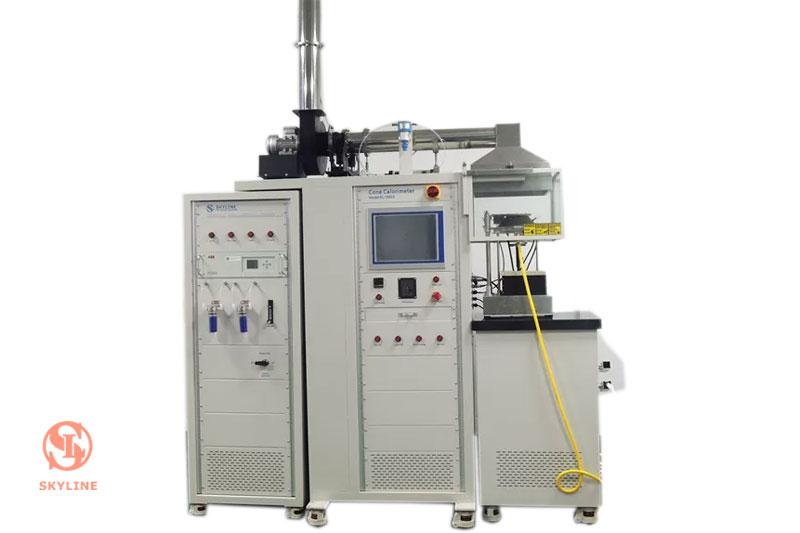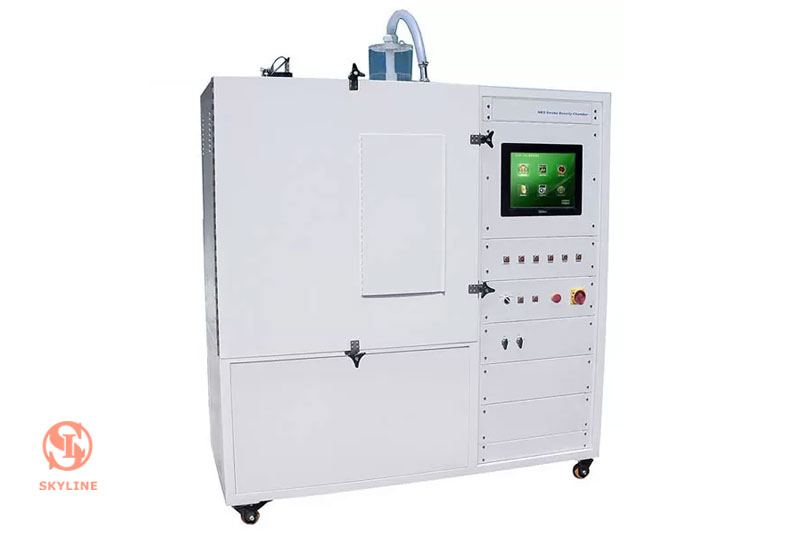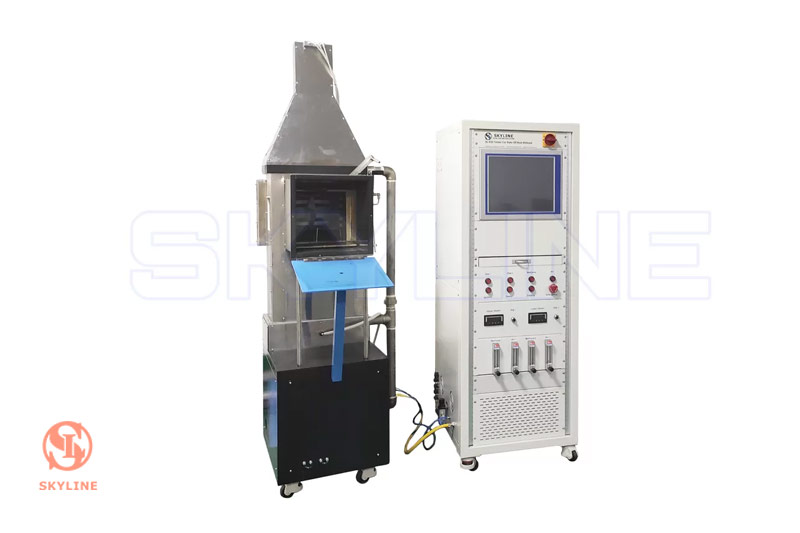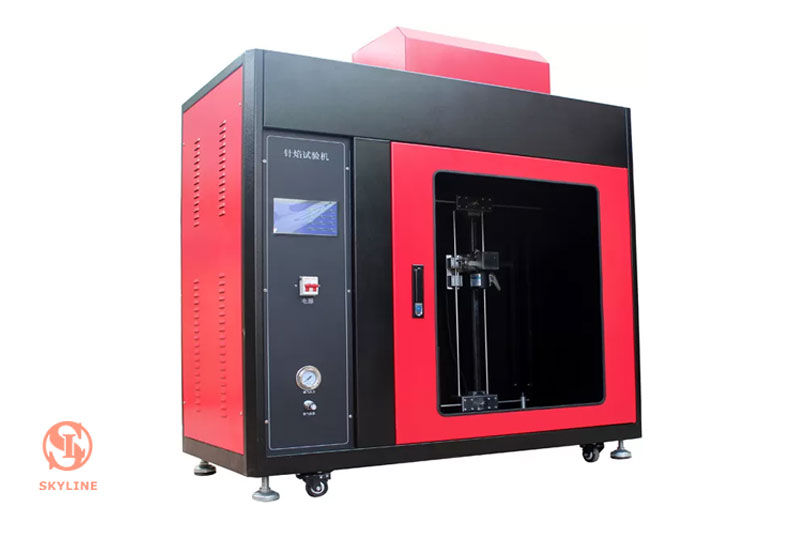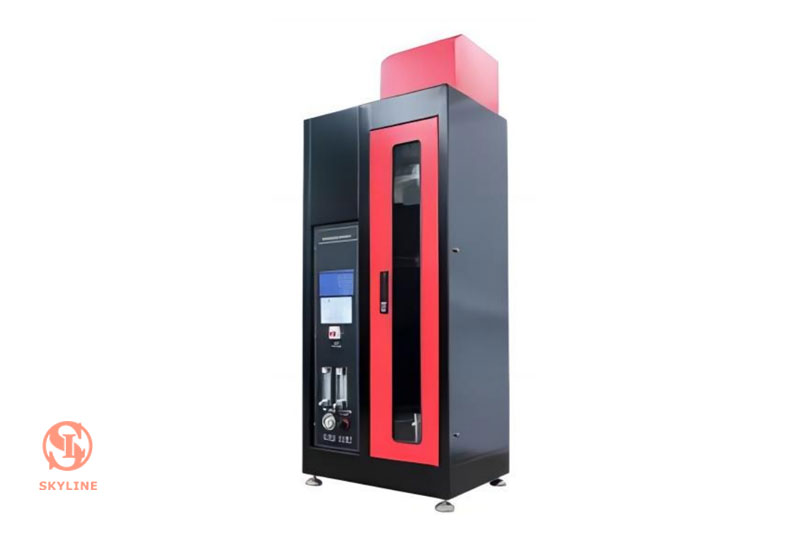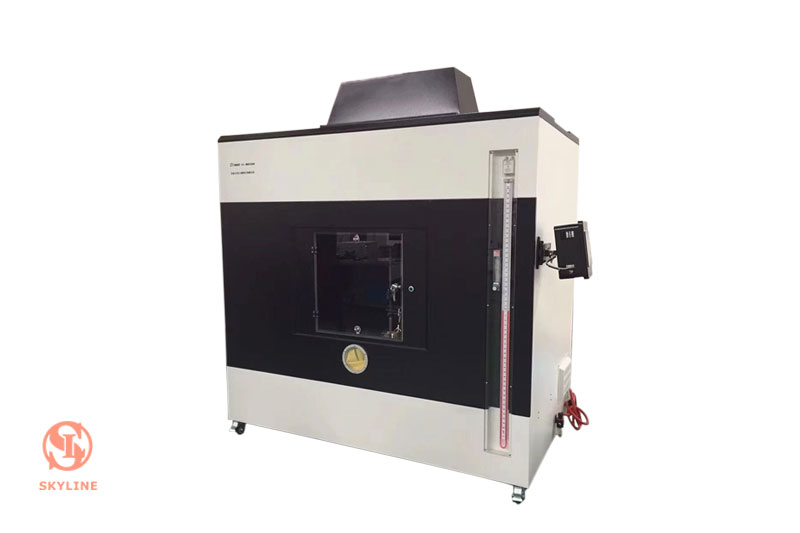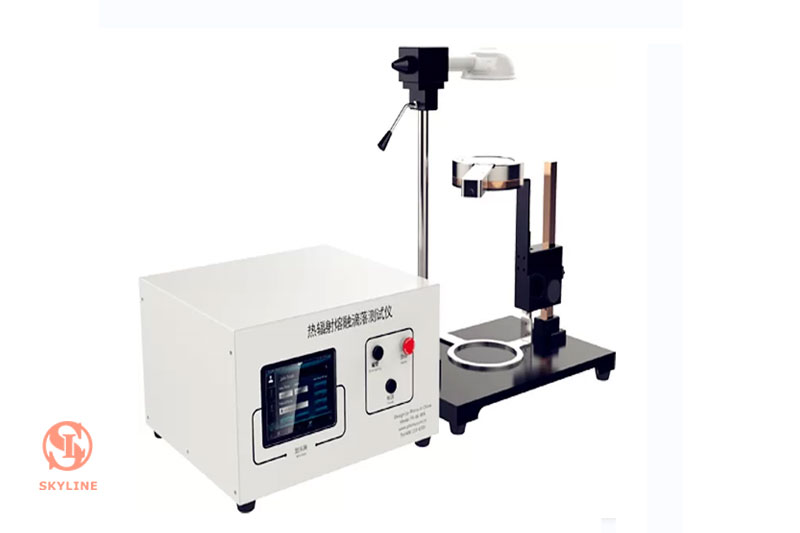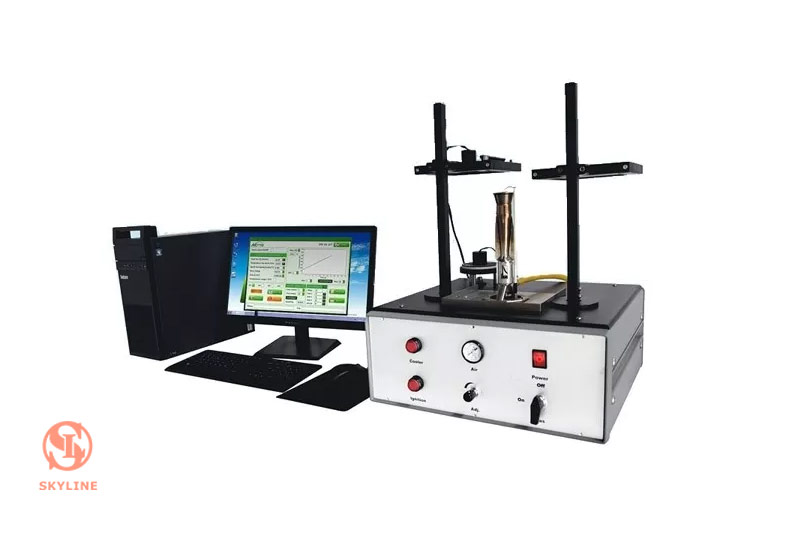How to measure the flame retardancy of wires and cables under certain conditions
Time: Author: SKYLINE Editor
Principle:
The principle of the Single Wires & Cables Vertical Flammability Tester is to measure the flame retardancy of wires and cables under certain conditions. The test involves placing a sample of the wire or cable in a vertical position and exposing it to a flame. The time it takes for the flame to spread a certain distance up the wire or cable is recorded, and the results are compared to the standard set by the IEC.
Equipment:
The Single Wires & Cables Vertical Flammability Tester consists of a combustion chamber, a burner, a gas supply system, and a control system. The combustion chamber is made of stainless steel and has a glass observation window for easy viewing of the test process. The burner is a Bunsen burner or a propane torch, and the gas supply system is used to control the flow of gas to the burner. The control system includes a timer and a temperature sensor.
Test Procedure:
To conduct the test, a sample of the wire or cable to be tested is placed in the combustion chamber. The chamber is then closed, and the burner is ignited. The flame is applied to the bottom of the wire or cable for a specified time, usually 60 seconds. The height of the flame and the time it takes for the flame to spread a certain distance up the wire or cable are recorded. The test is repeated three times, and the results are averaged.
Results:
The results of the test are expressed in terms of the time it takes for the flame to spread up the wire or cable. The test is divided into two parts: Part 1 and Part 2. Part 1 is for testing single wires, while Part 2 is for testing cables. The IEC specifies the maximum time allowed for the flame to spread up the wire or cable for each test.

